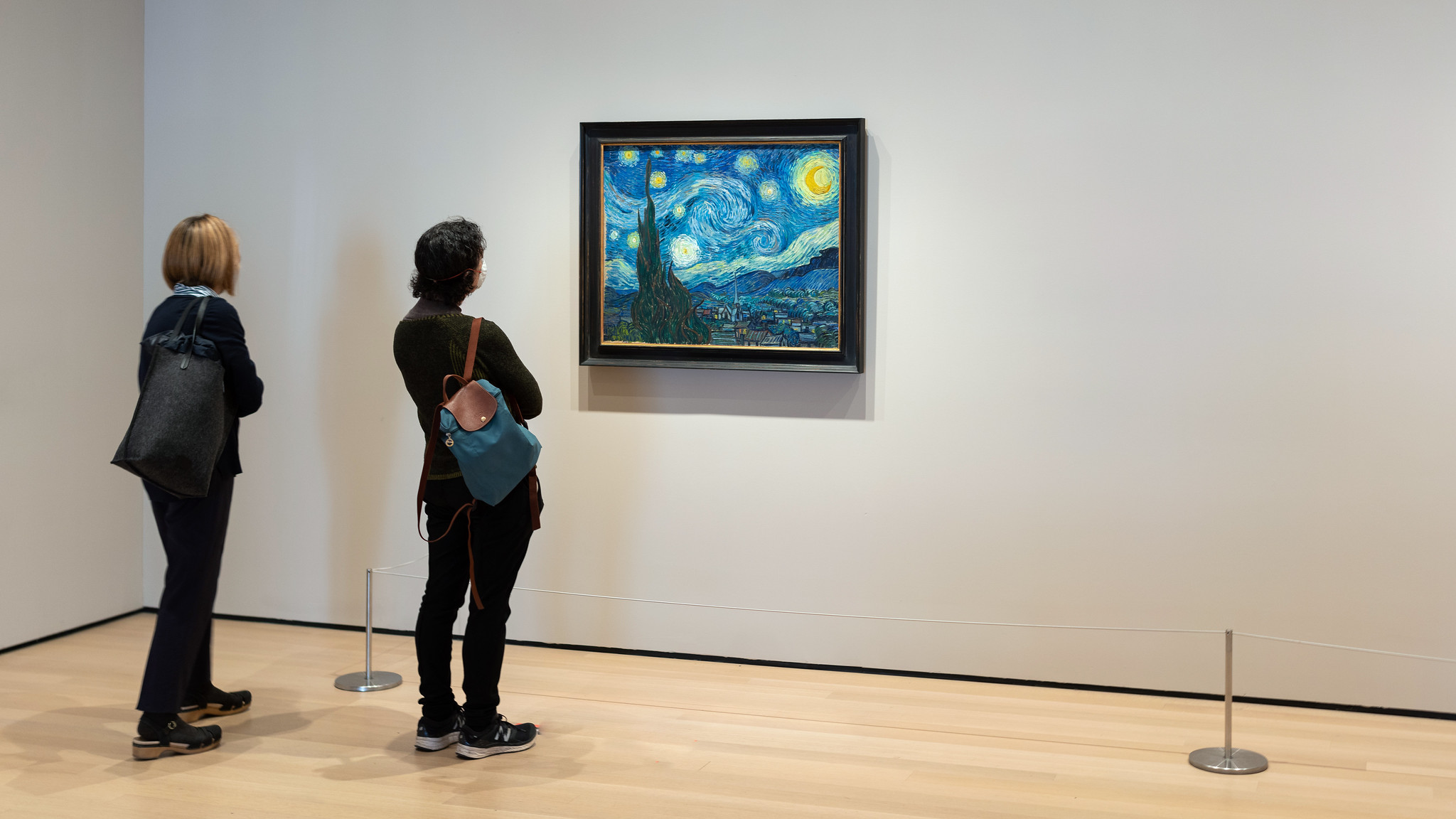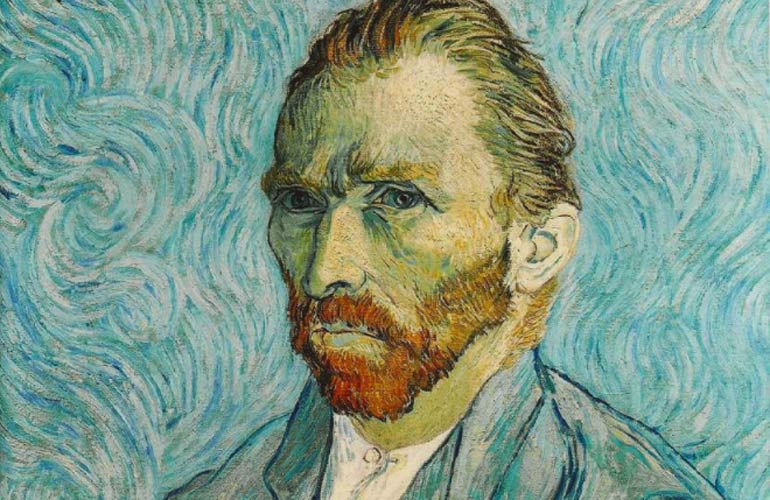Vincent van Gogh’s The Starry Night: History, Meaning, and Legacy
Few artworks in history are as instantly recognisable as Vincent van Gogh’s The Starry Night. Painted in 1889 during his stay at the Saint-Paul-de-Mausole asylum in Saint-Rémy-de-Provence, France, this masterpiece has captivated generations of art lovers. Its swirling sky, glowing stars, and striking brushwork reflect both Van Gogh’s inner struggles and his unmatched ability to transform emotion into beauty.
While Kiki’s Club doesn’t offer Van Gogh reproductions, his life and work inspire us deeply. Van Gogh loved painting French landscapes, which connect beautifully to our Travel Destinations collection and he was also famous for capturing nature, something you’ll find reflected in our Nature and Landscape collection.
The Painting: A Night of Swirls and Stars
In The Starry Night, a turbulent sky dances with radiant stars and a crescent moon. Beneath this cosmic energy lies a calm village, anchored by a church spire. To the left, a tall cypress tree reaches skyward, bridging earth and heaven.
Van Gogh’s impasto brushstrokes give the painting movement and texture, while the contrasting blues and yellows make the night sky glow with intensity. The work is both restless and serene, mirroring the dualities of human experience.
Van Gogh's use of bold colors and dynamic brushstrokes gives the painting its distinctive energy and movement. The stars and moon radiate with a glowing intensity, while the swirling patterns in the sky suggest the powerful forces of nature at work. The cypress tree, often seen in Van Gogh's work, adds an element of melancholy and contemplation, possibly reflecting the artist's own emotional state.

The Story Behind The Starry Night
Van Gogh’s Life and Struggles
Vincent van Gogh was born on March 30, 1853, in Groot-Zundert, Netherlands. His early life was marked by a series of personal and professional struggles. After trying various occupations, including working as an art dealer and a missionary, Van Gogh decided to pursue a career as an artist in his late twenties. Despite his lack of formal training, he quickly developed a distinctive style characterized by bold colors and expressive brushwork.

Painting from the Asylum
Van Gogh had voluntarily admitted himself to the asylum of Saint-Rémy-de-Provence, France following a series of mental health crises, including the infamous incident in which he cut off part of his own ear.
Despite his turbulent mental state, Van Gogh remained remarkably productive during his time at the asylum, creating some of his most iconic works. "The Starry Night" was painted in June 1889 from memory, inspired by the view from his window at the asylum, as well as his fascination with the night sky.
In a letter to his brother Theo, Van Gogh described the inspiration behind the painting: "This morning I saw the countryside from my window a long time before sunrise with nothing but the morning star, which looked very big."
Reception and Legacy
When Van Gogh painted "The Starry Night," his work was not yet widely recognized or appreciated. He struggled with poverty and mental illness throughout his life, selling only a handful of paintings before his death in 1890. However, in the years following his death, Van Gogh's work began to gain recognition for its emotional depth and innovative techniques.
Today, "The Starry Night" is celebrated as one of the greatest masterpieces of Western art and is housed in the Museum of Modern Art (MoMA) in New York City, where it continues to inspire and captivate millions of visitors each year. The painting has also become a cultural icon, referenced and reproduced in countless forms, from posters and merchandise to popular music and film.
Artistic Techniques in The Starry Night
Use of Colour and Brushwork
One of the most striking features of "The Starry Night" is Van Gogh's use of color and light. The contrast between the deep blues and vibrant yellows creates a sense of luminosity and intensity, while the swirling patterns in the sky suggest movement and energy. Van Gogh's thick, impasto brushstrokes add texture and depth to the painting, giving it a tactile quality that draws the viewer in.
The composition of the painting is also noteworthy. The vertical lines of the cypress tree and church spire create a sense of balance and harmony, while the horizontal lines of the village and hills anchor the composition. The dynamic sky, with its swirling clouds and radiant stars, dominates the scene, reflecting Van Gogh's fascination with the cosmos and the forces of nature.
Symbolism and Meaning
"The Starry Night" is often interpreted as a reflection of Van Gogh's inner turmoil and emotional state. The turbulent sky and intense colors suggest a sense of restlessness and agitation, while the quiet village below represents a desire for peace and stability. The cypress tree, traditionally associated with death and mourning, adds a somber note to the painting, perhaps reflecting Van Gogh's own struggles with mental illness and feelings of isolation.
Some art historians have also suggested that "The Starry Night" has a spiritual dimension. The stars and moon, glowing with an almost otherworldly light, evoke a sense of wonder and transcendence. Van Gogh was deeply influenced by his religious upbringing and his interest in spirituality, and this painting can be seen as an expression of his search for meaning and connection in the face of suffering.
Why Van Gogh Still Inspires Today
Van Gogh’s fascination with landscapes and natural scenes makes his work timeless. If you love the way he captured the French countryside, explore our own Travel Destinations collection. If it’s his love for nature that speaks to you, our Nature and Landscape collection offers paint by numbers kits that let you capture a similar sense of beauty and calm.
Conclusion
"The Starry Night" remains a powerful and evocative work of art, a testament to Vincent van Gogh's extraordinary talent and vision. Through his use of color, light, and brushwork, Van Gogh was able to convey profound emotions and capture the beauty and mystery of the night sky. Despite the personal challenges he faced, his work continues to inspire and move people around the world, a lasting legacy of one of the greatest artists in history.
Van Ghog's paintings also give us a glimpse into his struggle with mental health, as well as his ability to find solace in creativity. Though he faced isolation and pain, his art became a way to process emotion and leave a lasting legacy of beauty.
At Kiki’s Club, we believe in that same power of creativity to support wellbeing. Our paint by numbers kits were created to help you slow down, manage stress, and reconnect with yourself because making art isn’t just about the finished canvas, it’s about the calm you find along the way.
Whether it’s through landscapes, travel-inspired scenes, or a design that reflects your personal story, our kits offer the same grounding practice Van Gogh sought when he painted the night sky. Creativity heals and that’s at the heart of everything we do.
Also read: Most Famous Painter In The History and Celebrating Famous Female Painters

